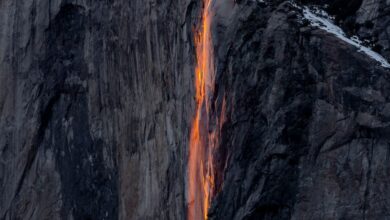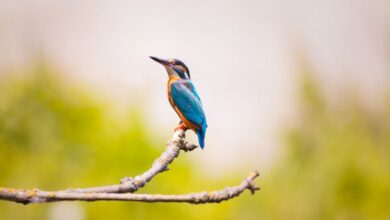When Is the Best Time for Wildlife Safaris in Canada
When planning a wildlife safari in Canada, the timing can significantly enhance your experience. With its vast landscapes and rich biodiversity, Canada offers unique opportunities to observe wildlife in their natural habitats. Different seasons bring different animals to the forefront, making it crucial to understand when to embark on your adventure to maximize your chances of spotting iconic species.
Spring Awakening
Spring, from late March to June, marks a period of renewal across Canada. As the snow melts, animals awaken from hibernation, and migratory birds return to the region. This is an excellent time for birdwatchers, as species such as the common loon, American robin, and various warblers become active.
In national parks like Banff and Jasper, you might spot black bears foraging for food after their long winter sleep. The lush greenery provides a vibrant backdrop for wildlife photography, making it a popular season for nature enthusiasts. Keep an eye out for moose, elk, and deer as they begin their mating rituals. Spring is also the time when many animals are caring for their young, offering unique viewing opportunities for those interested in observing family dynamics in the wild.
Summer Spectacles
Summer, spanning from June to August, is arguably the peak season for wildlife viewing in Canada. The warm weather and extended daylight hours create optimal conditions for animal activity. This time is particularly rewarding for whale enthusiasts, especially on the coasts of British Columbia and Newfoundland, where humpback and orca sightings are common.
In the forests and grasslands, you can expect to see bears, including grizzly and black bears, actively foraging for berries and other food sources. Visitors to places like Kootenay National Park will have ample opportunities to observe these majestic creatures. Additionally, summer is prime time for observing the playful antics of young animals, from bear cubs to wolf pups.
Moreover, the Canadian Rockies become a haven for hikers and wildlife watchers, as the trails offer breathtaking views and the chance to spot mountain goats, bighorn sheep, and even the elusive lynx. As summer progresses, many parks host guided tours, providing insights into the behavior and habitat of the diverse wildlife.
Autumn’s Bounty
As summer fades into autumn, from September to November, a different type of wildlife experience emerges. This season is characterized by vivid foliage, making it an exceptional time for photographers. The cooler temperatures signal migration for many bird species, and areas like Point Pelee National Park become hotspots for observing flocks of migrating waterfowl and songbirds.
Elk and moose are particularly active during the fall rutting season. The deep, resonant calls of elk can be heard echoing through the valleys, providing a thrilling auditory experience. Wildlife enthusiasts often flock to places like Elk Island National Park, where the majestic animals can be seen in their natural habitat, engaging in mating displays.
Additionally, autumn is when bears begin to prepare for hibernation, making it a crucial time to observe their feeding behavior as they bulk up for the winter months. The chance to see these animals in action, coupled with the stunning autumn scenery, makes this season an unforgettable time to explore Canada’s wilderness.
Winter Wonders
Winter, lasting from December to March, transforms Canada into a snowy wonderland. While many might think wildlife viewing is limited during this time, winter safaris can be incredibly rewarding. Animals such as wolves, moose, and caribou are more visible against the stark white landscape.
In places like Wood Buffalo National Park, visitors can observe the majestic bison and experience the serene beauty of the frozen tundra. Winter is also a prime time for birdwatching, as raptors like snowy owls and various hawk species are more prevalent in colder months.
Adventurous travelers can take part in guided snowshoeing or cross-country skiing tours, combining outdoor activity with wildlife observation. The crisp winter air and the tranquility of remote landscapes provide a unique perspective on Canada’s wildlife.
Timing Your Adventure
Ultimately, the best time for a wildlife safari in Canada depends on your interests and the specific species you wish to observe. Each season offers distinct experiences, ensuring that whether you choose to visit in spring, summer, autumn, or winter, Canada’s wildlife will captivate you. Planning your safari around seasonal wildlife activity will enhance your experience and create lasting memories of the great outdoors.







